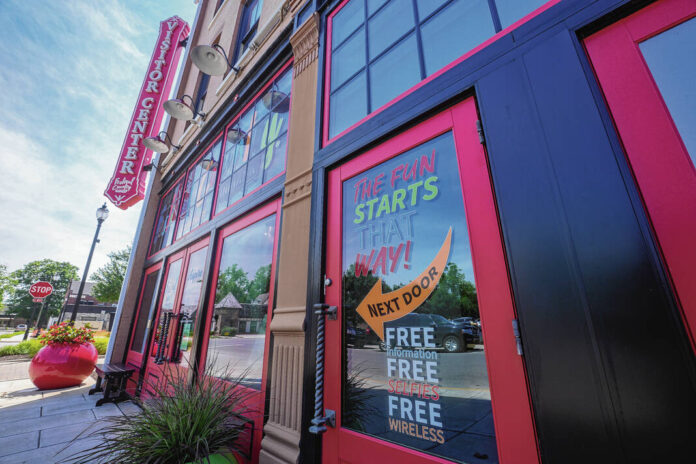Tourism brought over $341 million into the Johnson County economy last year, according to a new study commissioned by the county tourism agency.
Festival Country Indiana, the county’s convention, visitors and tourism commission, is seeing proven success since its inception in 2017, said Ken Kosky, executive director. His claim is backed up by the findings of a tourism economic impact study conducted by Kentucky-based Certec, Inc., this past year.
A notable finding from the study shows tourism contributed $341.3 million to Johnson County’s economy in 2021, up from $255.7 million in 2017 — when Festival Country was created. The economic impact represents an 8.4% annual spending increase each year, the study says.
When Festival Country began operating in 2017, Johnson County was one of the last counties in Indiana to form a tourism agency. An economic impact study conducted in 2013, prior to Festival Country’s existence, showed that the economic impact of tourism declined .5% year over year.
“What that showed is if you don’t invest in tourism marketing and tourism product development, you’ll continue to lose market share,” Kosky said.
Festival Country upped the county’s efforts over the years to advertise its attractions, from festivals to sites like The Historic Artcraft Theatre, and amenities such as local shopping and dining. This study was commissioned to get an idea of how successful that has been, and Kosky said the results prove their efforts are working.
The study examines data from the entirety of 2021. It was primarily conducted by researching tax and spending data in the county, and also through a series of in-person interviews done with tourists at places such as hotels and attractions.
Anyone from outside Johnson County, whether they are from Indianapolis or another state, is considered a tourist or traveler in the study.
Purchases made by travelers while in the county accounted for $244.5 million of the $341 million total in the study. The county collected over $80 million in tax revenue from tourism.
A majority of purchases were made on food and beverage, according to the study. Breaking it down by sector, attraction visitors accounted for over 36% of purchases. Individuals passing through the county accounted for the next largest share of this spending, around 24%, and lodging guests accounted for 21%. Those visiting friends and relatives in the county followed with nearly 19% of the total spending.
Guests visiting the county come largely from within Indiana, from as close as Indianapolis to as far as South Bend and Jeffersonville, Kosky said. Most out-of-state visitors are coming from neighboring states, Illinois, Kentucky and Ohio, he said.
The study showed that on average, 40.3% of visitors stay one to three nights, while 30.6% are in for a day trip. In addition, 46.8% reported they were on their first trip to the county.
What brought most people to the county were attractions and activities, according to the interviews conducted in the study. Top attractions listed included Mallow Run Winery, dining, shopping, the Artcraft, Historic Downtown Franklin, aquatic centers and splash pads, the Johnson County Museum, Rascal’s Fun Zone and Apple Works. Visitors also said they were in town to visit Indianapolis attractions, such as the zoo and the Indianapolis Motor Speedway.
Kosky expects more visitors to be attracted to the newest attraction, the Gatling Gauntlet at the Johnson County Park, which opened earlier this summer, so it was not included in the study. The Gauntlet is an obstacle course that features 20 different obstacles all laid out on a 1.6-mile course. He said he’s already received positive feedback and messages from interested travelers asking about it.
Music and festivals are also peak interest, Kosky said. From live music festivals like WAMM Fest in Greenwood to the regular summer festivals in Franklin.
In addition to spending, tourism also contributes job growth to the county economy, the study says. It showed tourism jobs grew from 2,921 in 2017 to 3,365 in 2021.
Based on the study, jobs produced from tourism spending, fall in a wide variety of sectors, not just the obvious service jobs like hotel clerks, ticket-takers or waiters. Over one-third of the jobs resulting from tourism spending were found in high-wage occupations such as professional and technical, managerial, sales, construction, craftsman, and operatives, according to the study.
Tourism spending also trickles down to contribute to other sectors in the economy. Tourist demand for restaurant meals, for example, “creates business not only for restaurants but for producers and packagers of fresh and frozen foods, butchers and dairies,” the study says.
Tourism is necessary for a local economy to thrive, Kosky said. He cited a 2018 study by Radius Indiana in southern Indiana, which found that, on average, households in the region could have to pay an additional $618 annually in taxes without a tourism industry to bring in tax revenue.
“Absolutely tourism is one of the major economic drivers in any community,” Kosky said.





